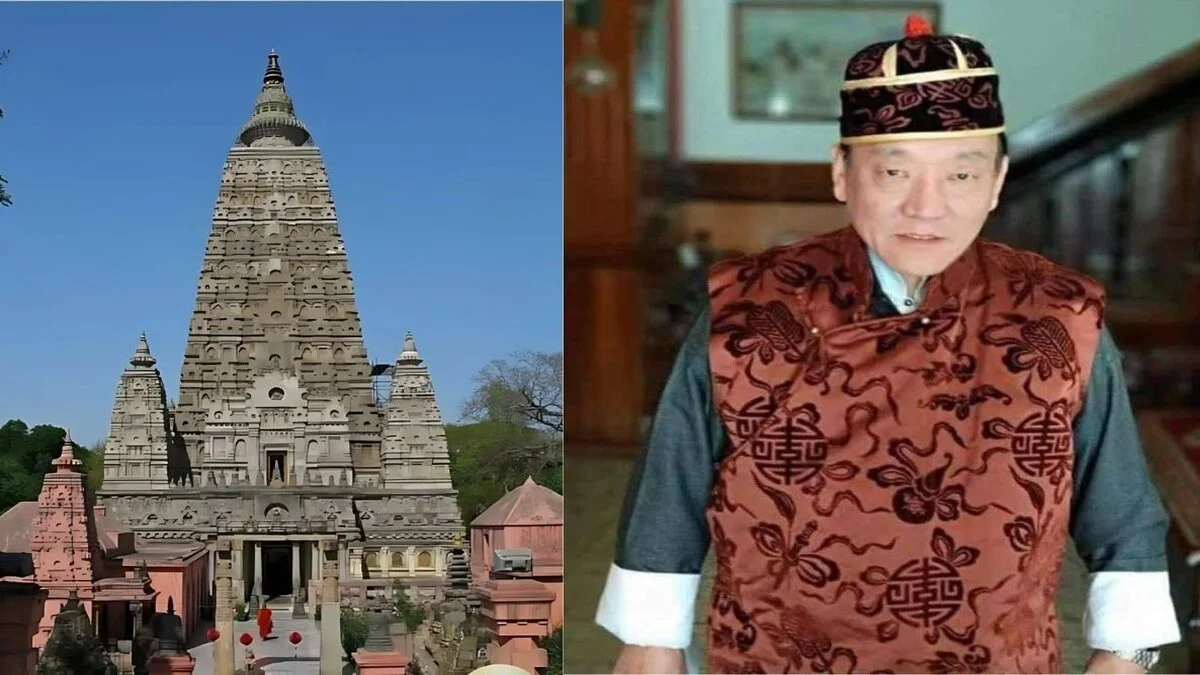GANGTOK, SIKKIM: On April 26, hundreds of protesters will gather at Zero Point in Gangtok, Sikkim, demanding repealing a controversial 1949 law that governs the Mahabodhi Temple in Bodh Gaya, Bihar. The rally, organized by the All India Buddhist Forum (AIBF), has gained momentum with the backing of Sikkim’s prominent tribal leader, Tseten Tashi Bhutia, who calls the temple “the spiritual epicentre of Buddhist heritage”.
Gangtok Rally Ignites Fresh Debate Over Buddhist Control of Sacred Site
At the heart of the conflict is the Bodhgaya Temple Act of 1949, which places the temple under a nine-member management committee—only four Buddhists, with the rest including Hindu members and a government-appointed district magistrate as chairperson 212. Protesters argue that the setup disrespects Buddhist traditions, pointing out that other religious sites in India, such as Hindu temples, are managed by their followers.
“This movement isn’t against any religion,” Bhutia said in a statement. “We simply assert that Buddhist temples must be managed by Buddhists”.
A Sacred Site with a Turbulent Past
The Mahabodhi Temple marks where Gautama Buddha attained enlightenment over 2,500 years ago. Recognized as a UNESCO World Heritage Site in 2002, it attracts millions of pilgrims annually. Yet, its governance has been disputed for decades.
Historically, the temple faced destruction under Turko-Afghan invader Bakhtiyar Khilji in the 13th century, leading to centuries of neglect until British archaeologist Alexander Cunningham restored it in the 19th century 12. After India’s independence, the 1949 Act was introduced to maintain secular oversight, a move critics say sidelined Buddhist authority.
“The last time Buddhists had full control was before the 15th century,” says a Bodh Gaya historian cited in a recent report. “Even then, Hindu and Buddhist practices coexisted here”.
Sikkim’s Role: A Buddhist Stronghold Joins the Fight
Sikkim, where Buddhism is deeply rooted due to its historical ties to Tibetan Buddhism, has emerged as a key player in the protest. The state’s Bhutia-Lepcha community, led by Bhutia, has long advocated for religious autonomy. Sikkim’s unique Ecclesiastical Department, which oversees Buddhist monasteries in the state, is a model for what protesters want in Bodh Gaya.
The AIBF’s Sikkim chapter has already submitted memoranda to state and national leaders urging reforms. “If Sikhs manage the Golden Temple and Hindus oversee Kashi Vishwanath, why can’t Buddhists control Mahabodhi?” asks a local monk involved in the campaign.
Opposition and Legal Hurdles
The Bihar government, which oversees the temple under the current law, argues that the committee ensures secular governance and prevents sectarian conflicts. Some Hindu groups oppose the change, noting that Bodh Gaya has been a shared pilgrimage site for centuries.
Legal experts say repealing the Act would require parliamentary approval, a complex process. “The law was framed to balance interests. Altering it could set a precedent for other religious sites,” says a constitutional scholar interviewed for this report.
Global Buddhist Solidarity
The movement has drawn international attention. The International Buddhist Confederation (IBC), a Delhi-based umbrella group representing 320 organizations across 39 countries, has supported Rally.
“Bodh Gaya isn’t just an Indian heritage site; it’s the heart of Buddhism worldwide,” says an IBC spokesperson. Similar debates have arisen in Sri Lanka and Thailand, where Buddhist groups closely monitor the temple’s management.
What’s Next?
The April 26 rally could escalate pressure on the central government if the demand gains traction. India may face a larger debate about religious autonomy vs. secular governance.
For now, all eyes are on Gangtok and whether this protest will be the turning point for which Buddhists have waited decades.
Key Facts at a Glance:
- Mahabodhi Temple: Built 5th–6th century CE; UNESCO-listed in 2002.
- 1949 Act: Mandates a mixed committee; only 4/9 members are Buddhist.
- April 26 Rally: Organized by AIBF and supported by Sikkim’s tribal leaders.
- Global Support: Backed by the International Buddhist Confederation 2912.










